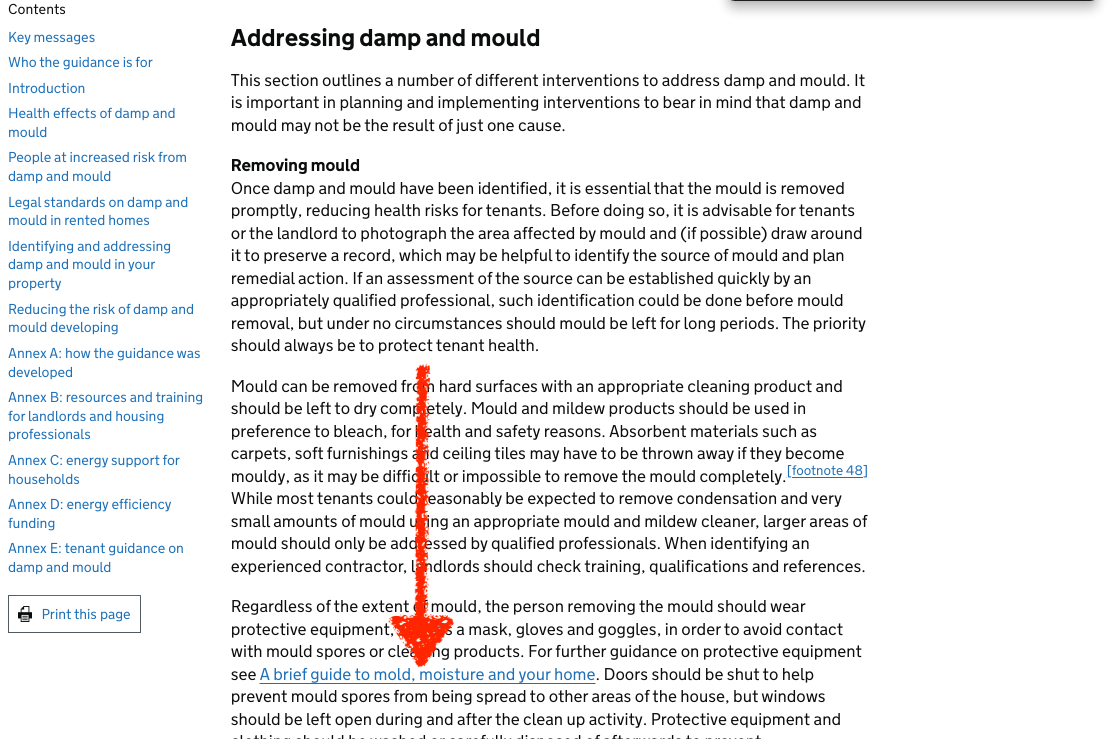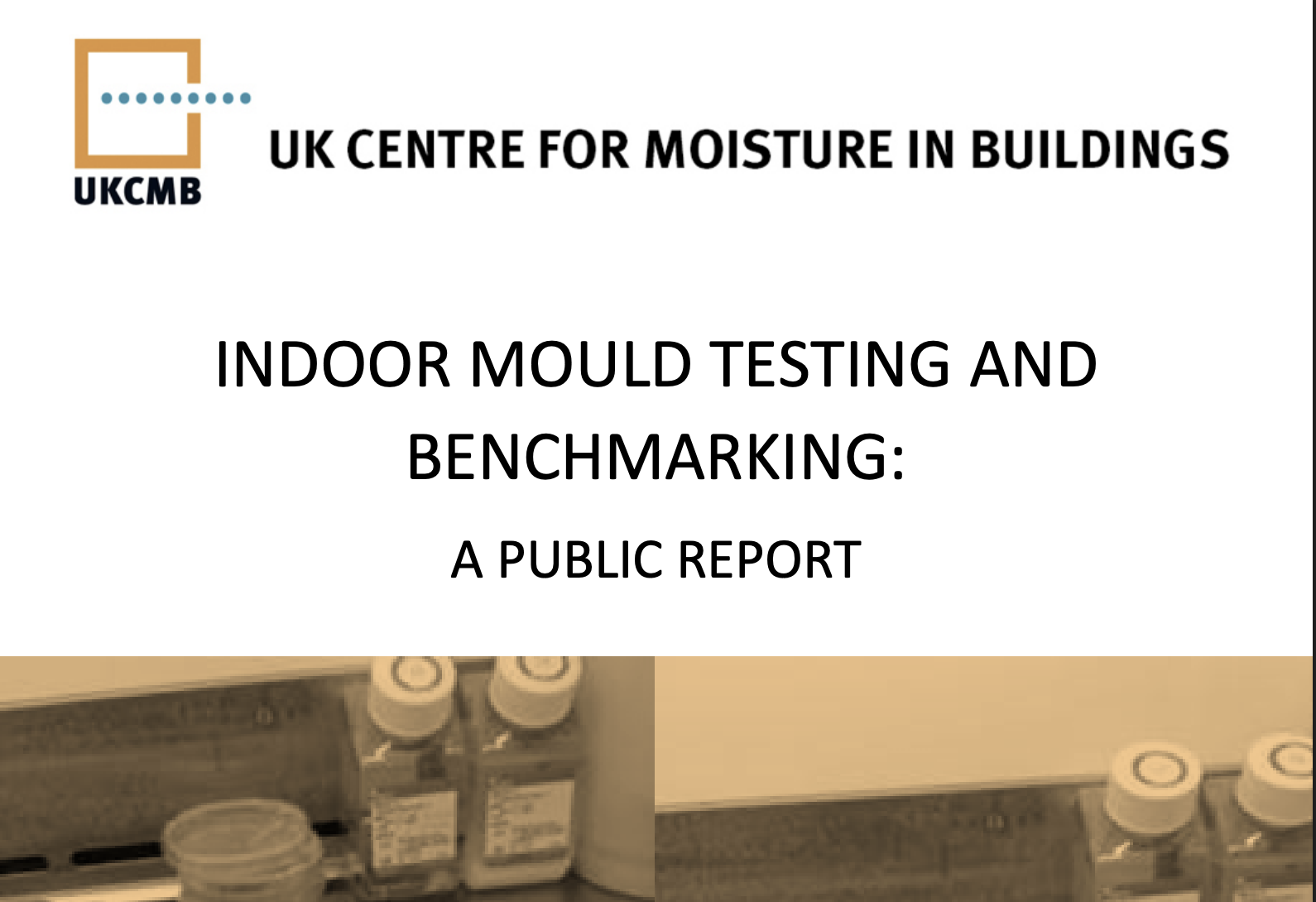
The sceptic’s case:
We’re going to tackle this topic by directly addressing the critics’ arguments head-on. Any self-proclaimed ‘mould expert’ should be able to confidently address these critiques and how they approach the underlying challenges.
There’s a lot to be learned from ‘steel-manning’ the case of sceptics and listening to critics… The best critics will tell you where your blindspots are and understanding their arguments allows you to better defend your methodology. Also, if you understand these as a consumer, you can avoid those selling you meaningless tests and sampling - which we often encounter. More on that later.
Caoimhín P Connell does a great job outlining the sceptic's case (as it stood in 2015) in a 2 hour talk posted to youtube in chunks. If you have a couple of hours the first chunk is the embedded video below. He’s entertaining, doesn’t pull any punches and does land some. That said, a knowledgeable, well trained remedial specialist or surveyor should be able to walk you through the crucial details of each critique in turn.
(Side note: If, like me you need to know how to say Caoimhín in order to read it, it's Irish and pronounced "Quiven", the anglicised version is 'Kevin'.)
We’re going to tackle this topic by directly addressing the critics’ arguments head-on. Any self-proclaimed ‘mould expert’ should be able to confidently address these critiques and how they approach the underlying challenges.
There’s a lot to be learned from ‘steel-manning’ the case of sceptics and listening to critics… The best critics will tell you where your blindspots are and understanding their arguments allows you to better defend your methodology. Also, if you understand these as a consumer, you can avoid those selling you meaningless tests and sampling - which we often encounter. More on that later.
Caoimhín P Connell does a great job outlining the sceptic's case (as it stood in 2015) in a 2 hour talk posted to youtube in chunks. If you have a couple of hours the first chunk is the embedded video below. He’s entertaining, doesn’t pull any punches and does land some. That said, a knowledgeable, well trained remedial specialist or surveyor should be able to walk you through the crucial details of each critique in turn.
(Side note: If, like me you need to know how to say Caoimhín in order to read it, it's Irish and pronounced "Quiven", the anglicised version is 'Kevin'.)


BUT modern science to he rescue!
Modern 'index' methods mitigate the problems of ubiquity and baselines or 'benchmarking'. Here’s a recent paper on just that from the UKCMB
Modern 'index' methods mitigate the problems of ubiquity and baselines or 'benchmarking'. Here’s a recent paper on just that from the UKCMB
What do we mean? Well…
It’s hard to quantify what is ’normal’ in any given property and any one or handful of samples might not represent the overall contamination levels. Mould is everywhere and you can walk into any home and find viable spores and mould debris on ALL surfaces.
What we mean by benchmarking is determining what ‘normal’ levels of mould debris are in a ‘normal’ environment. The IICRC standards calls that ‘Condition 1: Normal fungal ecology’. It will vary seasonally and geographically. Domestic norms will also vary if you live in an urban setting or a rural or wooded area.
How can you possibly tell if the mould debris in your home is ABNORMAL, if you don’t know what NORMAL is? This is what Caoimhín P Connell is referring to when he says “None of the ‘Testing’ being performed is valid.” We agree to a point… much mould sampling that is sold to people is indeed statistically irrelevant.
Microscopy - looking at mould through microscopes, in our opinion, is all but dead…. unless you have a gargantuan budget, scientists and statisticians at hand. Why? Because mould is ubiquitous. Its everywhere. You can walk in to any property on the planet and find viable mould spores and non-viable debris of thousands of species. You can take that to a lab, have some low paid intern take their best ‘educated guess’ at what they see, maybe even grow cultures, but it gives you no valid analysis for how contaminated the property, as a whole, might be.
(Yes, by the way, when you have mould analysed using microscopy in a lab, it’s rarely senior or experienced scientists doing this work.)

A Tale of Three Industries
Caoimhín’s last bullet point is about what those that claim to be professionals, or even experts, dealing with mould in the built environment should know. To his mind, the room of insurance and claims professionals he's talking to is full of people with enough knowledge to call themselves 'mould inspectors.'
Caoimhín’s last bullet point is about what those that claim to be professionals, or even experts, dealing with mould in the built environment should know. To his mind, the room of insurance and claims professionals he's talking to is full of people with enough knowledge to call themselves 'mould inspectors.'
In his introduction, Caoimhín identifies two ends of the industry that are, as he puts it, 'diametrically opposed'.
- The ‘legitimate scientific and medical industry'
- The 'fear-based, hype-filled remediation industry’
He’s talking sense. In housing, we can actually identify three groups of stakeholders and every one has their own interests:
- Landlords and insurance companies who may be liable and paying (or avoiding paying) for work.
- Mould remediators who are looking for and paid for work.
- The media because ‘if it bleeds it leads’. Caoimhín identifies this and is right again: The term ‘Toxic Black Mould’ was “created by sensationalist news outlets” (in America decades ago), it sells papers and gets ratings and, these days, clicks. Watch this 10 year old US news trailer and you’ll see what I mean…
DampAndMould.Academy exist independently of these main interests. We have no dog in the fight. We are independent of property and liability concerns, remedial services and media hype. This is deliberate - we want to provide the clearest assessment we can without any incentive to tell you what you, or we, want to hear.
We don’t turn a profit by confirming or denying a problem exists, nor by finding a problem and offering you our services to solve it. We independently assess every situation in the context of industry best practices, the highest standards of care and the latest advancements in the field.
In other words, we have zero conflict of interest.
We don’t turn a profit by confirming or denying a problem exists, nor by finding a problem and offering you our services to solve it. We independently assess every situation in the context of industry best practices, the highest standards of care and the latest advancements in the field.
In other words, we have zero conflict of interest.
So, then, if you are concerned you have a mould problem that might be affecting your health then protect yourelf by doing some research (we recommend our free course, blog posts and YouTube channel) and beware of anyone offering anything for free, even a quote. At least understand that the way they offer it for free is by getting paid work later.
Modern techniques CAN identify elevated mould debris in a property’s dust… but what results mean in context, what to do about it and in what order is all a matter of interpretation of the raw data

